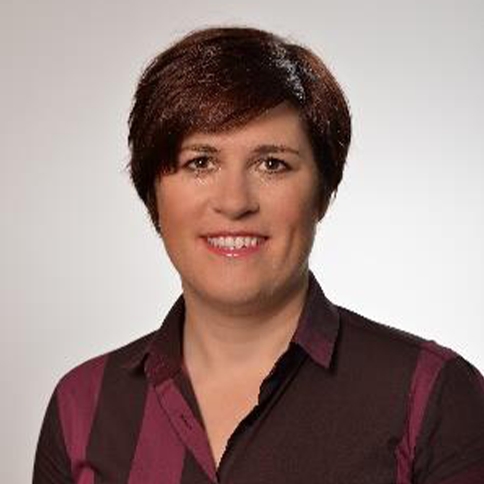FEATURED ARTICLE
Exiting Stronger Than Ever: Crisis as an Opportunity
Helena Mah
Right now, we need to listen more than we speak. Not just to hear, but to understand. Many leaders need to take a total inventory across their organizations and listen to what people are thinking, feeling, fearing, and experiencing. Only with a complete picture and accurate understanding of today, can you better project tomorrow. There are more and more discussions emerging about how to address this uncertainty head-on; how to prepare for getting economies up and running again, as we resurface from lockdowns; what to consider and how to best use the time now to help mitigate the long-term impact of this crisis. There are a few key components organizations need to consider in order to exit stronger than ever: envision your tomorrow, rethink your operating models, adopt agile innovation and build capabilities for a fast-changing environment.
Care for employees.
In times of crisis, caring for customers starts with thinking about employees first. Keep them safe and offer genuine support and listen to your frontline employees: they are your eyes and ears on the ground. This is all-too-often forgotten. Collect feedback and critical insights from your employees on how customers are feeling and how daily interactions are changing. Leverage their expertise and knowledge to adapt to changing experiences. The way organizations deal with their customers, their employees, and the broader community in a crisis, is likely to leave lasting memories in customers’ minds.
Anticipate 2021.
Certain industries may not look the same a year from now. Leadership connects the dots and thus shapes how the organization will look post-crisis and how the organization needs to transform to get there. Creating strategic approaches is happening quickly and in real-time, nimbly, in order to respond accurately to changing conditions and opportunities coming up.
The next few weeks and months will shape the future of your company.
The point isn’t to develop modular scenarios for multiple versions of your future. Define actions and tactics robust enough to enable adaptation and proper scaling. Don’t forget to connect strategy with purpose to keep the organization on course and to help your employees envision the endpoint. This “big idea” will bring consistency and determination to your evolving tactical response.
Adapt your operating models.
Remote sales and virtual interactions are the new normal; recent restrictions shifted consumption online. Companies need to learn how to strengthen their online presence and build new e-commerce businesses quickly. Be pragmatic: remember, time is of the essence. Go to market fast, with a limited offering and limited locations, then gain strong traction and scale from there. Learn and adapt— Don’t forget to measure and monitor your impact and discard poor ideas while generating new ones constantly. Implement improvements weekly until your business matures to business as usual.
Keep a real-time pulse on changing customer preferences.
Customers changed their habits and rituals. Recent satisfaction metrics show a shift from what customers want to what they need. It is key to understands customer preferences to redesign journeys that matter and to rapidly innovate in this very different context. Customers are trying digital and remote - Support customers shopping digitally: introduce new remote options, establish omnichannel payments, accelerate time to market and enable contact-free delivery. Many customers who convert to digital services will stick to them after the immediate crisis is over. Companies making this shift effectively and deliver superior customer experiences have an opportunity to increase adoption and maintain the relationship.
Find savings without sacrificing experience.
In a downturn, cutting costs is inevitable. But that doesn’t have to come at the expense of a good customer experience that creates substantial value. The sooner that companies can fulfill new customer needs and accelerate time to market, the better the return. Building agility across functions to handle changing customer circumstances is necessary and will have long-lasting benefits. Introduce a test-and-scale approach and allow the creation of new experiences with a quick release to market. Prioritize innovations that fit with remote, digital or home delivery trends that are likely to accelerate and continue to differentiate in our new reality.
Keep your people safe, stay on top of your business and deal with the uncertainty despite constantly changing conditions. The world is evolving fast. We don’t know which scenario we are approaching. We need to try to be the best learner—the first to know where the world is going; be the best adapter—the one making the best decisions. It isn’t about starting with the perfect plan, it’s about being adaptable and constantly improving—this will matter most in this fast-moving world.
Helena Mah is a senior executive who takes a vision and makes it a reality. She intuitively understands the threads of opportunity through an organization and brings them together into a coherent strategy. In her 20 years long international career Helena inspired action and empowered individuals to unlock their potential and innovate to accelerate growth. Respected as a credible voice in decision making, establishing strategic partnerships and flexible while adjusting to changing priorities, Helena is a true team member.
Currently, as Management and Business Consultant Helena is supporting international companies in the definition of their Business and Commercial strategy for higher impact, supporting their organization evolution while enabling innovation and customer value, spearheading major strategic transformations through digitalization and technology adoption.
Her main managerial focus is strategic development, sales and marketing, while she also has a rich experience with change management in organizations. Previously Helena was a member of management teams in international companies. As VP Transformation for Celtra, she defined company-wise Enterprise strategy and operational frame and thus tripled the number of clients and platform usage. In her regional CMO role for Microsoft, she transformed the Marketing function into a revenue-generating engine. With an innovative digital marketing approach, she helped to increase the company’s value and the offering. Under her leadership Marketing became a valued internal shareholder and seen as a growth driver. During her time at Tušmobil as Chief Marketing Officer, she managed to raise company equity value and market share before the targeted acquisition, while transforming the marketing organization to become commercially focused. Before that, in her General Manager role in GfK, she managed Regional Market Intelligence new business growth, improved company performance by 46% during the recession, achieved positive operational results after several negative years and strengthened leading regional share.
Helena is an active member of several managers associations and contributing to the assemblies linked to technology, digitalization and AI.


BE THE FIRST TO COMMENT